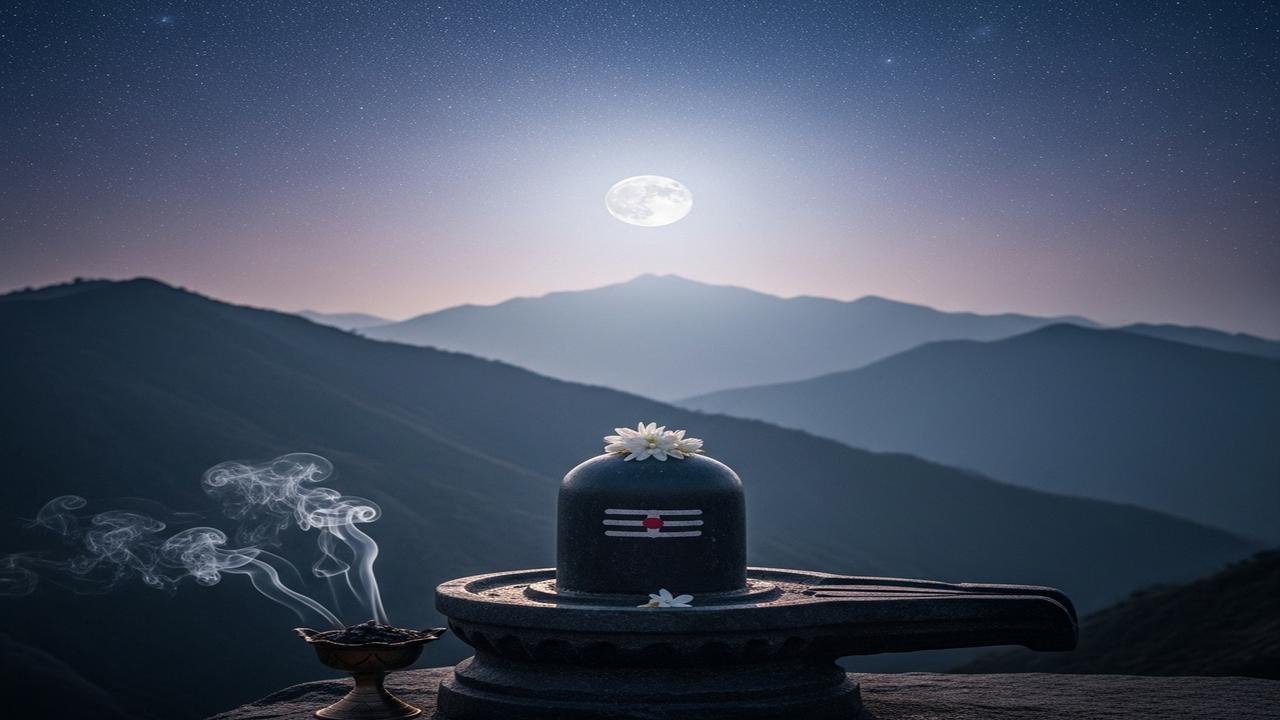Mahashivratri: Why Devotees Fast On The 14th Lunar Night

Mahashivratri: what the fast marks
Mahashivratri — literally “the Great Night of Shiva” — is observed on the 14th lunar night (chaturdashi) of the waning moon (krishna paksha) in the Hindu lunar month usually called Phalguna or, regionally, Magha. The festival’s observable feature is an all-night vigil and a variety of fasts; the reasons for fasting mix myth, ritual discipline and inward symbolism. Different Hindu traditions—Śaiva, Śākta, Smārta and even many Vaiṣṇava households—embrace the day with distinct emphases, and the sources for its meaning are plural rather than uniform.
Mythic and textual backgrounds
- Marriage and union: In many popular accounts, Mahashivratri commemorates the divine marriage of Shiva and Pārvatī. Here the night signifies the union of puruṣa (the transcendent principle) and prakṛti (creative energy), a central idea in several tantric and devotional traditions.
- Night of the linga or light: Some Puranic narratives (found across the Śiva Purana, Skanda Purana and Linga Purana) tell of a limitless column of light appearing to gods and sages. The gods’ inability to find its beginning or end is resolved by acceptance of Shiva’s transcendence; the night therefore becomes one of awareness of the absolute beyond form.
- Act of world-saving tapas: Other stories recall Shiva’s ascetic power—his role in taking poison during the churning of the ocean (halahala) or in punishing demons—which highlights self-sacrifice, restraint and the protective aspects of the god.
Scholars and practitioners treat these narratives as complementary: Mahashivratri can be simultaneously a marriage-celebration, a commemoration of the cosmic revelation, and a reminder of ascetic power. Textual citations vary by lineage; devotional commentaries tend to read the night as especially fruitful for japa, meditation and grace.
Why fasting? Practical and symbolic reasons
- Discipline of the senses (tapas): Fasting is a form of tapas — disciplined heat or austerity — that helps steady the mind for meditation or vigil. In Śaiva thought, inner discipline prepares the aspirant for the experience of Shiva’s presence.
- Purification: Abstention from ordinary food and sometimes from water (nirjala) signals an inward cleansing that is both ritual and psychological: less distraction, more focus on mantra, scripture and worship.
- Solidarity and devotion (bhakti): For many devotees fasting is an offering, a voluntary denial made to please Shiva; the act of holding back ordinary comforts becomes a devotional gift.
- Symbolic renunciation: The night is associated with darkness (the waning moon). Fasting and vigil symbolise turning away from sensory “darkness” (avidyā—ignorance) toward inner light and knowledge.
How people fast and worship on Mahashivratri
Practices vary by region, family custom and physical ability. Common observances include:
- Nirjala fast: Some observe a full fast without water from dawn to dawn.
- Partial fast or fruit-only (phalahar): Others take only fruits, milk or light sattvic food.
- Jagarana (night vigil): Staying awake through the night with puja, bhajans, kīrtan or silent meditation is central to many communities.
- Lingam worship and abhiṣeka: Temple rituals focus on the lingam (a symbolic form of Shiva) with ritual baths using water, milk, honey and bilva (bael) leaves, accompanied by mantra recitation—commonly Om Namah Śivāya or the Maha Mrityunjaya mantra.
- Scriptural reading: Recitals from the Śiva Purana, or local ślokas and stotras, are customary in many households and temples.
Practically speaking, families choose a form of fasting that fits health and household needs. Pilgrimage to Jyotirlinga shrines, local Śiva temples or participation in community jagaran remain popular public expressions.
Different theological emphases
- Śaiva readings: Emphasise union with the absolute and the potency of asceticism. Mahashivratri is a chance for sādhanā (practice) aimed at mokṣa (liberation).
- Śākta/Śakta-tantric readings: Highlight the interplay of Śiva and Śakti: the night when cosmic energy and consciousness unite. Rituals may include mantra and yantra practices along tantric lines.
- Smārta and Vaiṣṇava perspectives: Some view the day as culturally important rather than doctrinally central; many Vaishnava households still honour Mahashivratri out of respect for shared mythic motifs or regional custom.
- Local folk traditions: Offer stories and customs not always recorded in pan-Indian texts; these vary widely and contribute to the festival’s living diversity.
What fasting is meant to do — inwardly
Across interpretations, fasting on Mahashivratri is less about punitive suffering and more about creating inner clarity. The restraint of food and sleep reduces external distractions, which makes sustained prayer, mantra repetition and contemplative practices more accessible. For many practitioners the night becomes a laboratory for attention: a concentrated period to practise presence, ethical restraint (dharma) and devotion.
Note on health: People with health conditions, the elderly, young children and pregnant or nursing women should consult a medical professional before attempting strict fasts. Many religious authorities explicitly permit milder forms of observance for those with constraints.
Summary
Fasting on Mahashivratri blends myth, ritual and inward discipline. Whether observed as strict abstention, a light fruit fast, or simply an evening of devoted vigil, the practice is intended to quiet the senses, awaken awareness and mark a sacred night associated with Shiva’s power, presence and union with the divine feminine. The festival’s meaning and modalities are diverse; that diversity itself is part of how Mahashivratri continues to be lived across India’s many religious cultures.
